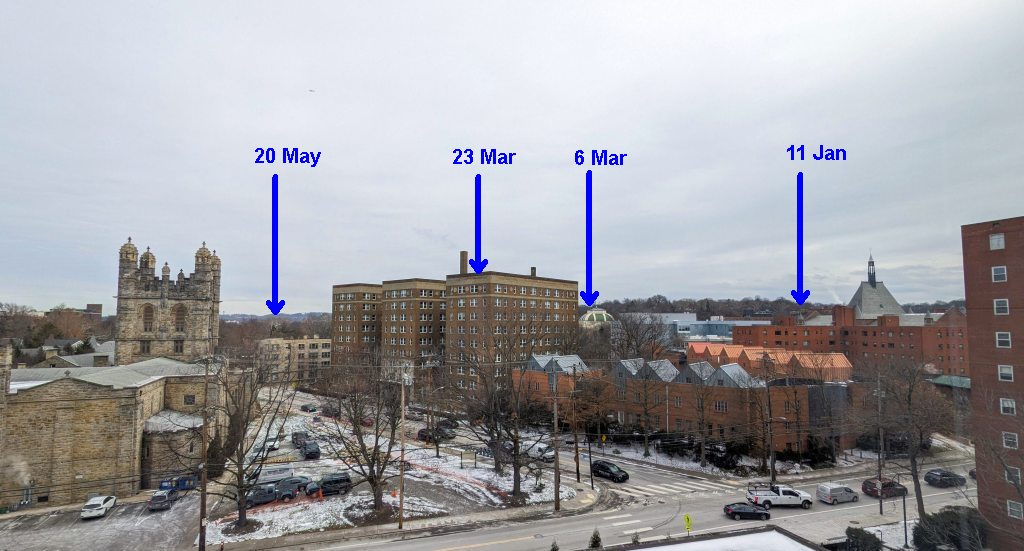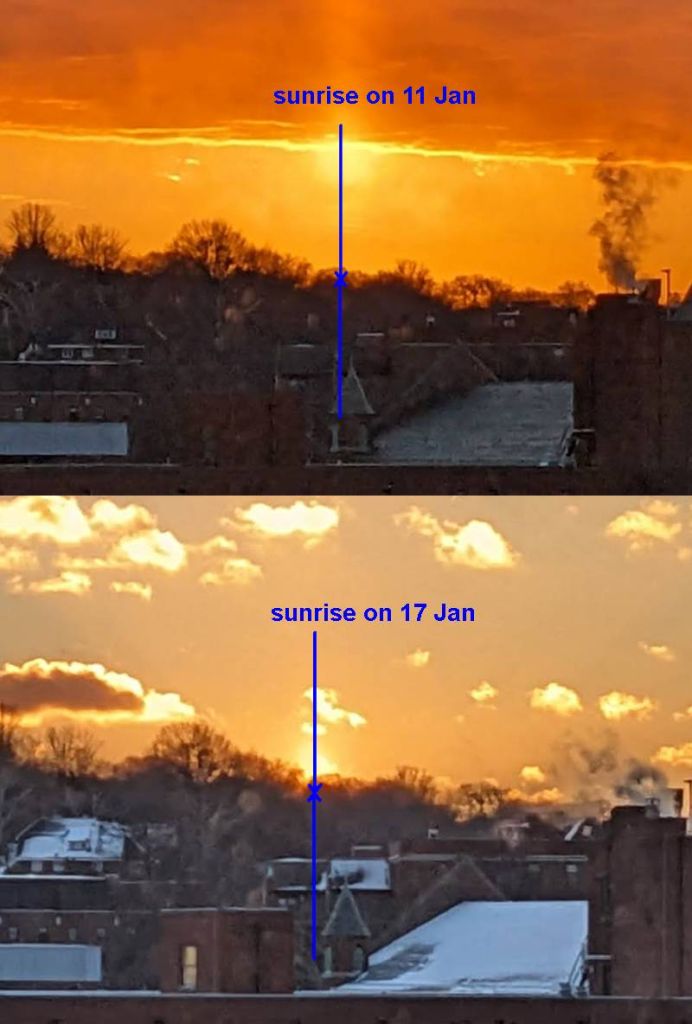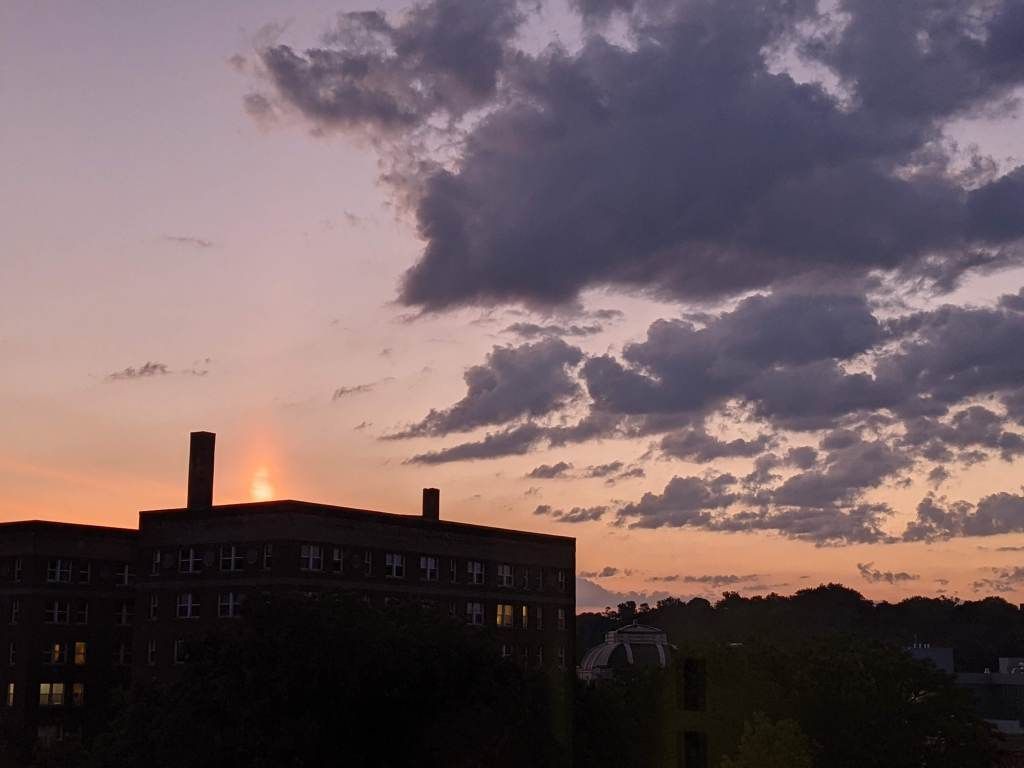
18 January 2024
Because the Earth’s axis doesn’t change how it tilts as it orbits the sun, the sun is higher in the summer sky and lower in winter. Meanwhile sunrise and sunset march north and south along the horizon from solstice to solstice.
You can see both effects in this composite photo by Tunç Tezel (The World At Night) showing the sun’s path at summer solstice, equinox and winter solstice in Bursa, Turkey, embedded from NASA APOD.

In my own way I’ve kept track of the same thing. When we lived in Greenfield our house faced west so I noted where the sun set for both solstices and the equinox. Now we face east and I haven’t done that yet for sunrise, but I already have some markers.
Here’s my eastern view at sunrise yesterday morning. This can be a marker.

I also have four photos of sun pillars which are good sunrise markers.
Put together on an eastern view photo, it looks like this. You can already see the sun marching along.

I did not add yesterday’s sunrise to the marker photo because it was too close to 11 January, but the sun did indeed move northward in 6 days. See composite photo below.

I’m well on my way toward completing the sunrise markers but it will take a year to do it. I need both solstices and the equinox.
Try it for yourself. Any horizon will do even if you’re in a valley. During one year take 3 to 12 photos, either just the solstices & equinox or one photo per month. Note the date and the sun’s location on the horizon. Put the markers on your horizon photo as I have done above.
So where did the sun come up today?
Ummm … Not today in Pittsburgh. It’s too cloudy to see the sun.




I LOVED this post, Kate! Thanks.
This was fascinating! I never knew an amature naturalist could do this! Thank you so much!